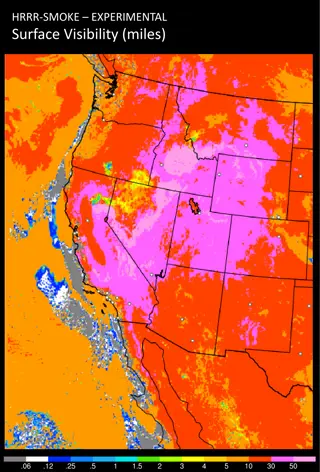Implementing Smoke-free Policies at Fairs: A Comprehensive Guide
Explore the step-by-step process of developing, implementing, and enforcing smoke-free policies at fairs. Learn from the experiences of other fairs, understand the importance of no smoking policies for health and the environment, and gain insights into addressing challenges and building partnerships to successfully create smoke-free fairs.
Download Presentation

Please find below an Image/Link to download the presentation.
The content on the website is provided AS IS for your information and personal use only. It may not be sold, licensed, or shared on other websites without obtaining consent from the author. Download presentation by click this link. If you encounter any issues during the download, it is possible that the publisher has removed the file from their server.
E N D
Presentation Transcript
Implementing Policies to Create Smoke-free Fairs Oregon Fairs Association Convention January 8, 2011
Objectives Walk through the steps of developing, implementing and enforcing a policy Learn from the experiences of other fairs Present data demonstrating support for no smoking policies Talk about proactive ways to avert conflict Provide resources to help implement no smoking policies Share enforcement strategies
Smoke-free Fair Process 1. Identify reasons to change 2. Identify challenges 3. Research surrounding communities 4. Identify partnerships 5. Conduct a survey 6. Present survey results & recommendations 7. Implementation 8. Evaluation
Identifying Reasons for Policy: Health Second hand smoke (SHS) Contains 4,000 chemicals, carcinogenic SHS exposure outdoors comparable to indoors (citation) Protect employees and volunteers Protect families, especially children
Identifying Reasons for Policy: Environment Litter (not only good for environment but reduces clean up) Risk of Fire
Identifying Reasons for Policy: Children Adults smoking sends wrong message Children s perception
Identify Challenges Staff who smoke Lack of local support Beer gardens Concern of loss revenue Decision makers Enforcement
Research Surrounding Communities Insert table of fair policies
Identify Partnerships TPEP Coordinators Fair manager / board Rodeo court 4H Smokers Staff Media
Conduct a Survey Why conduct a survey Hear opinions Challenges real or perceived? How to conduct a survey Involve partners (TPEP Coordinators) Paper or PDAs Walk around fair Public health booth Think about sample size
Survey Results What data from the 2009 surveys do we want to present? (see notes) **Degree of harm to health?** *Smoking should not be allowed where children may be?* Smoking should not be allowed where crowds may gather (not as convincing in Clackamas) **Everyone has the right to breathe clean air** **Events that are family friendly**
Survey Results What data from the 2009 surveys do we want to present? Where should cigarette smoking be allowed! **Would you return to the fair?** How should we present the results? Using tables? Graphs? CONCLUSION: The data tell us that people want a policy. People will return if the fair is 100% SF
Share Results (option 1) Community partners Presentation for decision makers Reasons to change Talking points Anticipate questions Prepare responses to challenges Recommend policy change Propose policy
Share Results (option 2) Resistant decision makers Publish in local media Letters to Editor Op Eds Which option is best for you?
Develop Policy Reasons for policy Where policy applies EVERYWHERE When policy applies ALL THE TIME
Implement Policy Change vendor contracts Present to staff Provide resources to quit Post signs Consistent enforcement Implement communication plan Train staff & volunteers how to enforce Communicate, communicate, communicate
Communication Plan Multi-prong approach Communicate early and often Press release after policy adopted Letter to Editor / Op-Ed Addition earned media as approach implementation date Announce on website Staff meetings Announce at rodeo and performance stage
Earned Media Components of Press Release? Components of Letter to Editor? Op-Ed? Involve community partners
Enforcement Consistency Post signs with friendly, positive messaging Train staff to respond to comments Kindly ask people not to smoke Compassionate listening Invite people to address the fair board Easier when policy is 100% smoke-free
100% Smoke-free vs. Designated Areas Easier to enforce No question re: location Consistent Cleaner NO exposure to SHS Location too far, not used Location too close, people exposed Location unknown, smoke anywhere anyway Smoke drifts, people annoyed
Common Responses to Policy YEAH! It s about time! I m so relieved, I ve been really bothered by the smoke You mean the fair is not smoke-free already? Okay Staff decide to quit
Common Responses to Policy What am I suppose to do now? Provide the Oregon Tobacco Quit Line You are taking away my right to smoke! We re protecting the right to breathe clean ai Why can t we smoke in the beer garden? Just like the Indoor Clean Air Act, we are protecting people from secondhand smoke
Resources to Quit Oregon Tobacco Quit Line Call from anywhere in Oregon: 1-800-QUIT-NOW (1-800-784-8669) Espa ol: 1-877-2NO-FUME (1-877-266-3863) TTY: 1-877-777-6534 Or register online at: www.quitnow.net/oregon/ Seven days a week, 5:00 AM to 12:00 AM (Pacific time) Oregon state law All private insurance required to pay $500 toward cessation counseling and/or medication
Evaluation Douglas County 2009 Clackamas County 2011
Contact Us! Jamie Riley Emily Ostrem Laurie Bothwell























